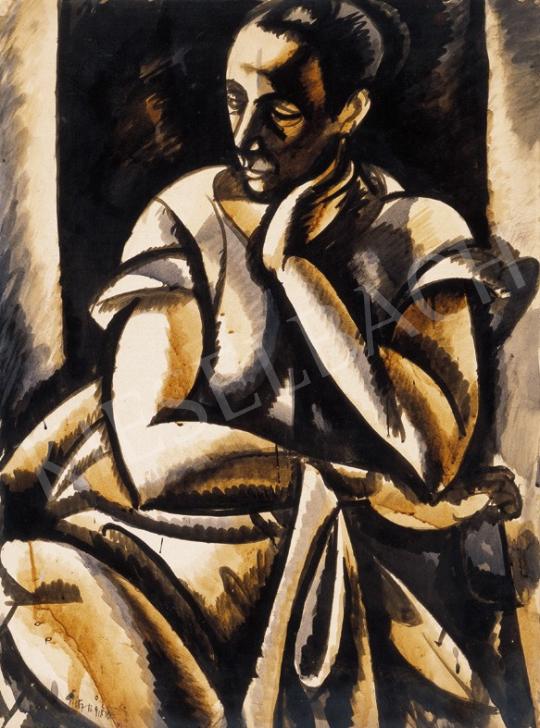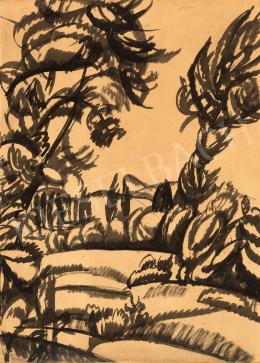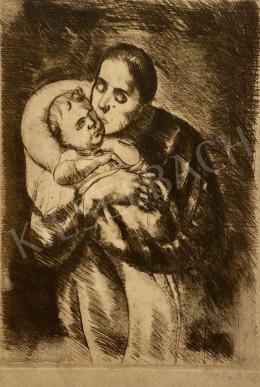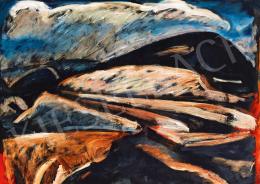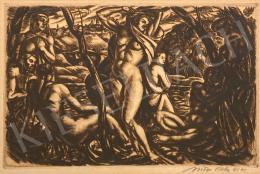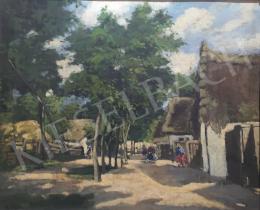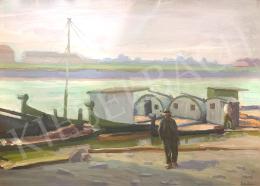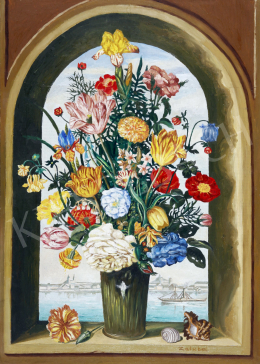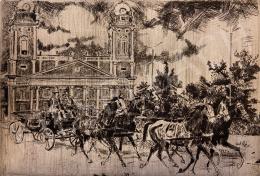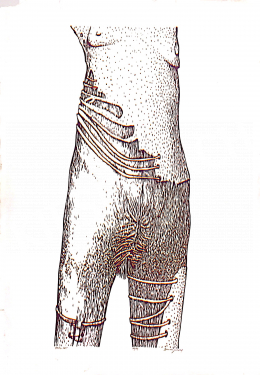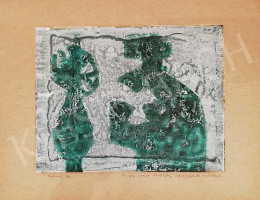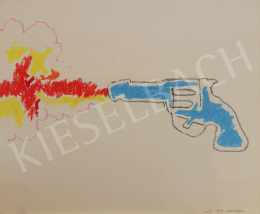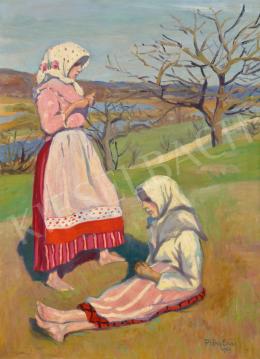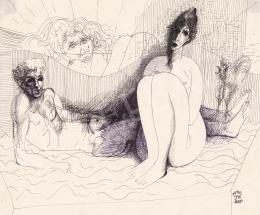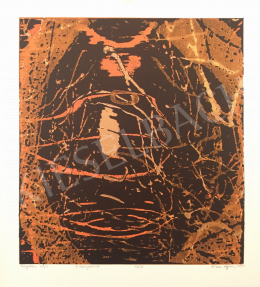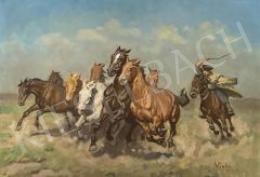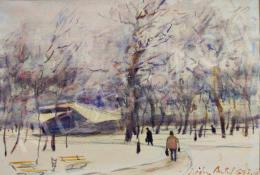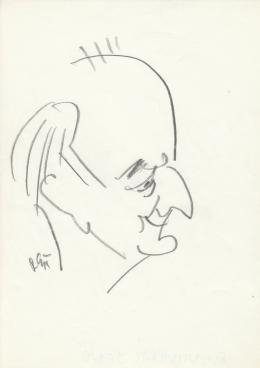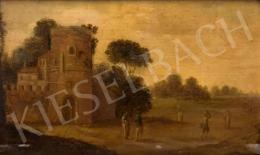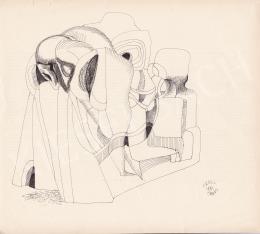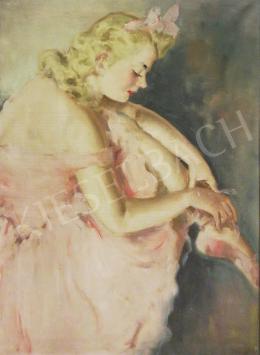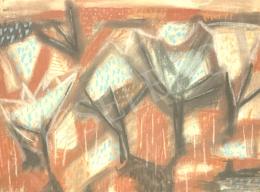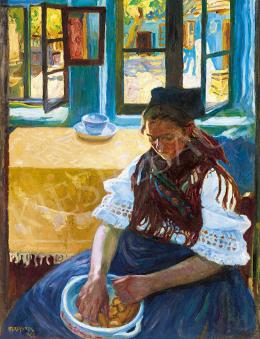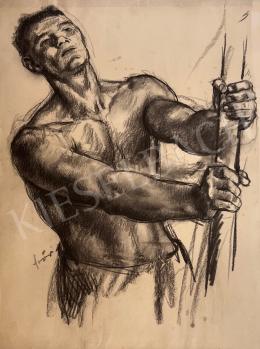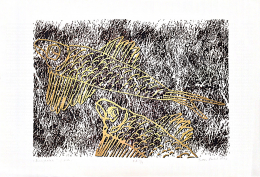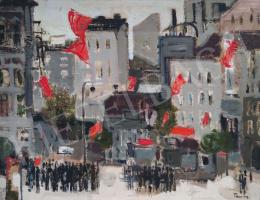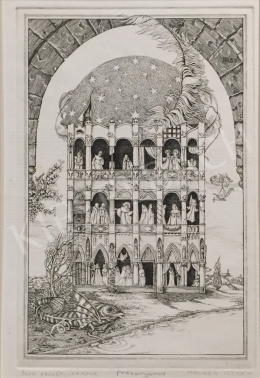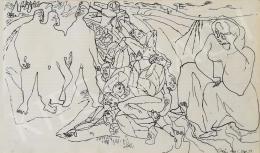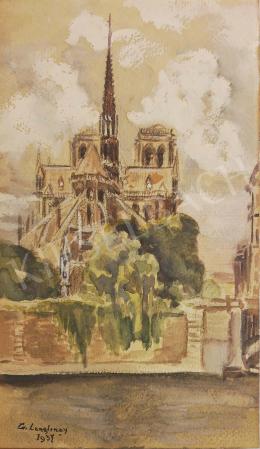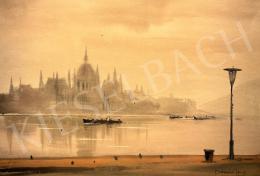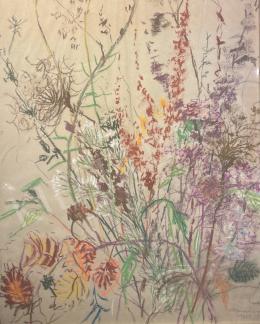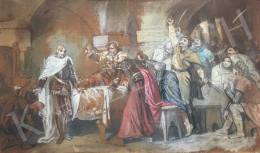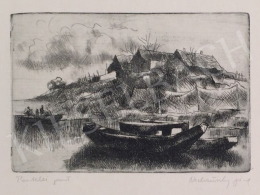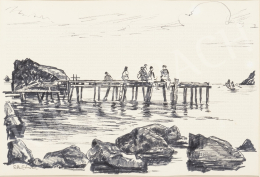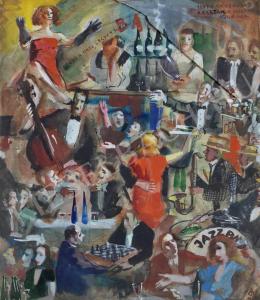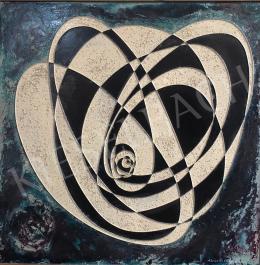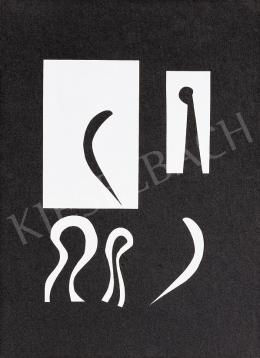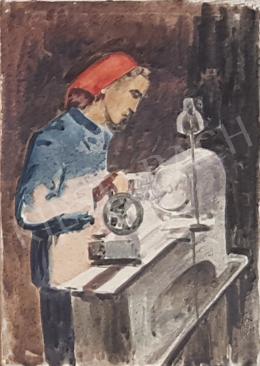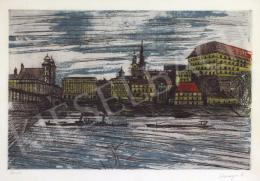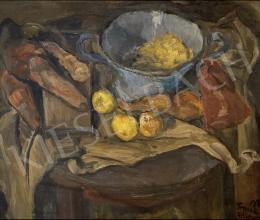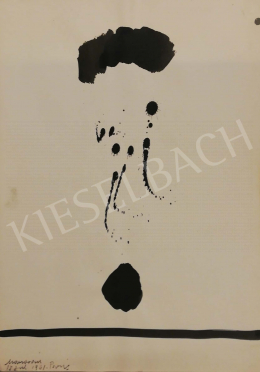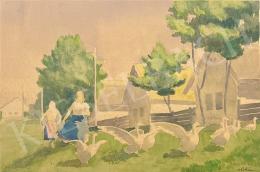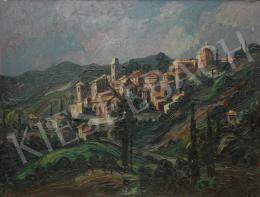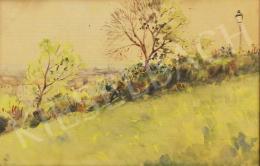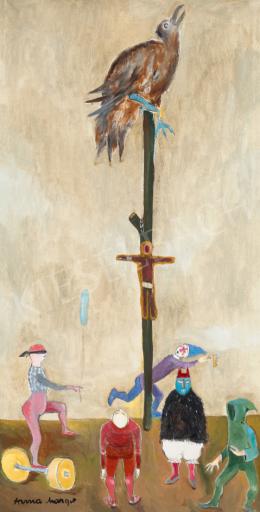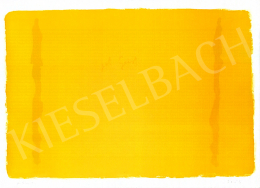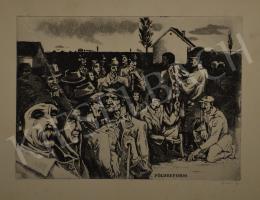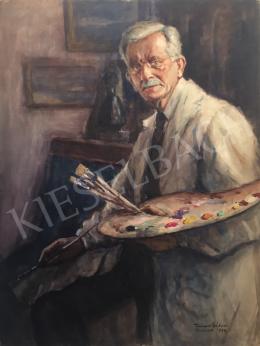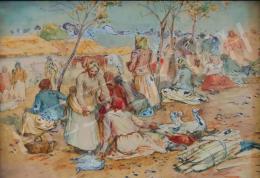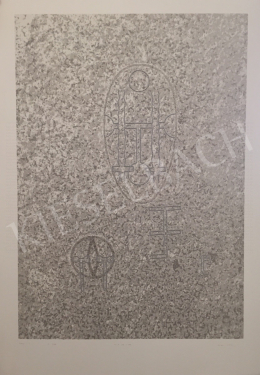Provenance:
It used to belong to Rudolf Bedő collection
Exhibited:
Dévényi Iván műgyűjteménye. (Iván Dévényi's collection.) Győr, Múzeum Képtár, 1977.
20. századi magyar művészet Dévényi Iván gyűjteményéből. (Hungarian Art of the 20th Century: From Iván Dévényi's Collection.) Kassák Emlékmúzeum és Archívum, 1993.
Reproduced:
Mojzer, Miklós: A központ pereme.(The Edge of the Center.) In.: Új Művészet, 1994/2. 30-33.p.
Magyar Művészet 1890-1919. (Hungarian Art 1890-1919). Ed.by Lajos Németh. Budapest, 1981. (pic.1188.)
Literature:
Kassák, Lajos: Az izmusok története. (The History of Isms.) Budapest, 1972.
Bajkay, Éva: Uitz Béla. Budapest, 1974.
Due not only to accident but also to the trends of these days, at our present exhibition the Hungarian avantgarde of the 1910's and '20s plays a major role. Besides the early Szobotka-pictures, the appearance of which is a real revelation, the visitors can admire significant pictures by Bortnyik and Kassák. The picture presented here is also one of the most outstanding pieces of the progressive trends of the era. The Sitting Woman tells the viewer about the very first line of Hungarian activism; it is a prominent piece of work by a leading master of the trend. The picture was created in 1918; with its mature, confident style and technique it is a perfect representative of Uitz's Indian ink paintings, which create the backbone of the oeuvre.
Uitz began his studies at the wall-painting department of the School of Applied Arts of Budapest, than he went to the Academy of Fine Arts, where he studied under Ede Balló and Károly Ferenczy. In 1912 he joined a free school where he became a member of a group which played a major role in establishing modern Hungarian art. The group followed Cezanne's structural style, studied Velasquez 's and El Greco's art and the then contemporary art magazines of Western Europe. As Lajos Kassák wrote, they were 'the Hungarian Fauves', who wanted to 'break out of the cage.'Uitz's intellectual horizon, his literary and philosophical education was mainly widened by Kassák, who later became his brother-in-law. Uitz's works were regularly published in the famous avantgarde art magazine 'Tett és Ma' and Marcell Nemes, who was one of the most famous collectors of the time, bought several of his pictures. His style was formed both by the logical, rational, structural principles of Cubism and the impulsive, emotional dilettantism of Expressionism. His works are characterized by a rational fanaticism: he wanted to create the synthesis of the two trends.
The most outstanding pieces of the Indian ink paintings, that create the quantitative and qualitative backbone of the oeuvre, were painted between 1916 and 1918. Painting with Indian ink makes the subsequent corrections impossible, so it requires a great competence. This genre suited Uitz's dynamic character very well. The characteristics deriving from the techniques, the outlining, the dramatic clash of the dark stains and the white of the paper resulted in a stressed plasticity and monumentality. As a student, most of Uitz's pictures were charcoal drawings, so he became a master of modeling. His works are based mostly on elements of drawing. As one of the critics said, he had remained a graphic all through his life. He painted only 26 oil pictures.
The picture under discussion - just as most of his figural compositions - evokes the majestic figures of the Madonnas of the Renaissance, and in this sense it also can be connected to the new classical trend, the European tendency that appeared at that time. The convex forms, which consist of arcs, suggest the momentary calm of a drawn bow; they are modeled by the black of the Indian ink and the warm brown of the walnut-stain. There is a whirling dynamism created in the picture, as if the stretched lines and strains were all attracted by a compositional center, a point of gravity. The center absorbing the lines of force is marked by the light triangular, which is brightening in the geometrical center of the picture, as a light at the end of a tunnel.
Uitz's colorful Indian ink series is one of the most outstanding results of 20th century Hungarian and European painting. As one of his critics, Iván Hevesy wrote, in Uitz's Indian ink paintings the little models, young dressmakers all appear with such a monumentality as if they were goddesses in a painting from the Middle Ages.
Péter Molnos






